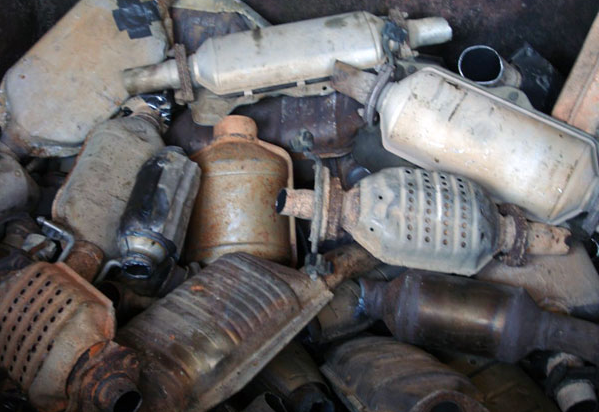Because of the precious metals catalytic converters contain, they have been targets for theft since the 1970s, when first mandated for motor vehicle use. Over the decades, as the value of precious metals has risen, the theft of catalytic converters has also increased. The theft of catalytic converters is not just limited to domestic crime, but is an international problem similar to motor vehicle theft and trafficking.
https://en.wikipedia.org/wiki/Catalytic_converter
Like Motor Vehicles, Register and Tag Catalytic Converters
Because of registration and licensing strategies, law enforcement professionals can identify motor vehicles anywhere on the planet, make arrests of criminals in possession of stolen motor vehicles, and repatriate lost and stolen vehicles with their rightful owners, using the following standards already in existence:
- ISO 3779:2009 specifies the content and structure of a unique item identifier (UII) in the form of a vehicle identification number (VIN) for global traceability.
https://www.iso.org/standard/52200.html - ISO 4030:1983 Specifies the requirements for the location and marking of the vehicle identification number (VIN) on motor vehicles, trailers, motorcycles and mopeds.
https://www.iso.org/standard/9721.html - American Association of Motor Vehicle Administrators (AAMVA)
https://www.aamva.org/getmedia/3514b445-1f2e-45c4-a785-49d9926e2f4e/AAMVA-2020-License-Plate-Standard.pdf
Using these standards for the vehicle identification number (VIN), the vehicle can be tied to the rightful owner through a unique identification number (UIN) in the form of a license plate, and linked on domestic and global uniform identification systems (UIS) databases used by motor vehicle registration bureaus of states, provinces, territories, nations and other worldwide networks, such as Interpol and the FBI’s National Crime Information Center (NCIC). Through the use of the vehicle identification number (VIN), license plates, and global registration networks, criminal enterprises can be disrupted, arrests can be made, and convictions can be achieved.
An ISO for Catalytic Converters
Similar to the strategies above, the same processes can be used as a solution for the theft of catalytic converters:
- Create a standard for a catalytic converter identification number (CCIN) using an alpha-and/or-numeric string akin to ISO 3779:2009.
- Create a standard for marking the bottoms of catalytic converters with large, easy to read, alpha-and/or-numeric string akin to ISO 4030:1983
- Create a separate flat surface where state authorities or the rightful owner can etch a globally unique identification number (UIN) akin the standards of the:
- American Association of Motor Vehicle Administrators (AAMVA)
- My Property ID Registry (https://mypropertyidregistry.com)
- Loss Prevention Certification Board (LPCB) (https://www.bregroup.com/products/lpcb)
- Loss Prevention Standard (LPS) 1224:
https://www.redbooklive.com/download/pdf/LPS1224.pdf - Loss Prevention Standard (LPS) 1225:
https://www.redbooklive.com/download/pdf/LPS1225.pdf
- Loss Prevention Standard (LPS) 1224:

